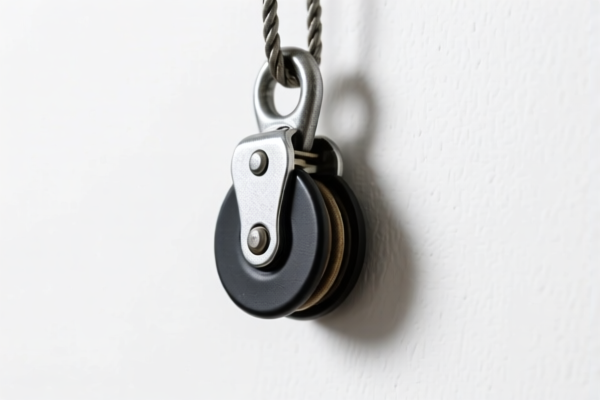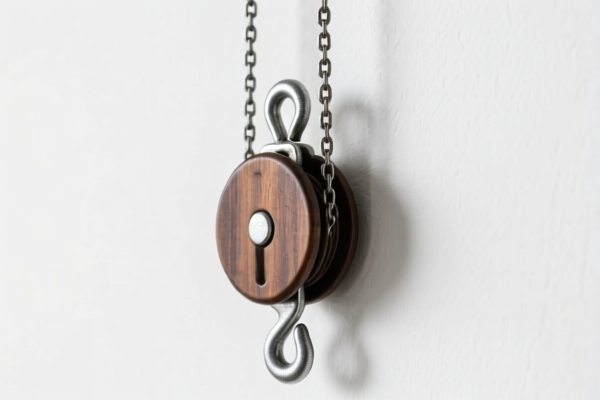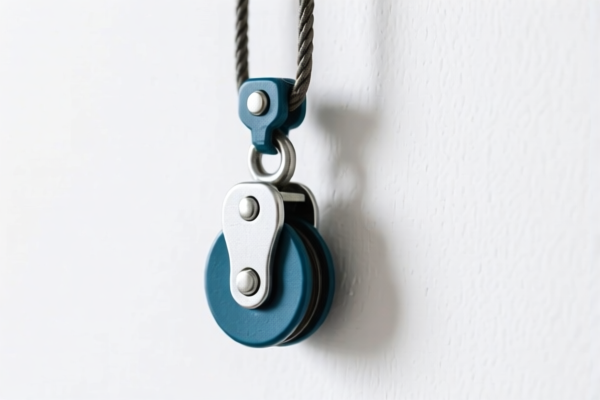| HS Code | Official Doc | Tariff Rate | Origin | Destination | Effective Date |
|---|---|---|---|---|---|
| 8425110000 | Doc | 55.0% | CN | US | 2025-05-12 |
| 8425190000 | Doc | 55.0% | CN | US | 2025-05-12 |
| 8483504000 | Doc | 60.7% | CN | US | 2025-05-12 |
| 8483506000 | Doc | 57.8% | CN | US | 2025-05-12 |
| 7326908605 | Doc | 82.9% | CN | US | 2025-05-12 |
| 7326908605 | Doc | 82.9% | CN | US | 2025-05-12 |
| 7315895000 | Doc | 83.9% | CN | US | 2025-05-12 |
| 7315900000 | Doc | 82.9% | CN | US | 2025-05-12 |




Furniture Pulley
A furniture pulley is a mechanical device used to lift or lower heavy objects, specifically furniture, with reduced effort. It typically consists of one or more wheels (sheaves) with a grooved rim around which a rope, cable, or belt passes.
Material:
- Sheaves: Commonly made of steel, aluminum alloys, or durable plastics (like nylon or polypropylene). Steel is used for higher weight capacities, while plastics are preferred for lighter loads and corrosion resistance.
- Rope/Cable: Nylon rope, polyester rope, or steel cable are standard choices. Cable is stronger and more durable but less flexible and can be heavier. Rope is more common for DIY applications and lighter furniture.
- Frame/Housing: Steel, aluminum, or heavy-duty plastic are used for the supporting structure.
- Hardware: Hooks, carabiners, and mounting brackets are often made of steel.
Purpose:
The primary purpose of a furniture pulley is to make moving heavy furniture easier and safer. They reduce the amount of force required to lift a load by changing the direction of the force and utilizing mechanical advantage.
Function:
Pulleys operate on the principle of mechanical advantage.
- Fixed Pulleys: Change the direction of the force, but do not reduce the amount of force needed. They are useful for redirecting a pull.
- Movable Pulleys: Reduce the amount of force needed to lift a load, but require a greater distance of rope to be pulled.
- Compound Pulleys: Combine fixed and movable pulleys to achieve both force reduction and direction change. The more pulleys in the system, the greater the mechanical advantage, but also the greater the rope length required.
Usage Scenarios:
- Moving Furniture Between Rooms: Lifting furniture over thresholds or navigating tight spaces.
- Loading/Unloading Furniture: Raising furniture into trucks or onto higher levels.
- Adjusting Furniture Height: Used in some adjustable shelving or display systems.
- DIY Projects: Creating custom lifting systems for specific furniture pieces.
- Attic/Basement Lifting: Raising or lowering furniture in confined spaces.
Common Types:
- Single Pulley: Consists of one wheel and is used to change the direction of force.
- Double Pulley: Utilizes two pulleys to provide a mechanical advantage.
- Block and Tackle: A system of multiple pulleys arranged in blocks to achieve significant force reduction. Often used for heavy lifting.
- Wire Rope Pulley: Designed for use with steel cable, offering high strength and durability.
- Rope Pulley: Designed for use with rope, typically for lighter loads.
- Garage Door Pulleys: Specialized pulleys designed for the lifting and lowering of garage doors, often featuring high weight capacities.
- Ceiling Mounted Pulleys: Designed to be attached to ceilings for lifting from above.
Furniture pulleys can be classified under several HS codes based on their specific characteristics and materials. Here's a breakdown of relevant classifications:
-
8425110000: This HS code covers “Pulley tackle and hoists other than skip hoists; winches and capstans; jacks: Pulley tackle and hoists other than skip hoists or hoists of a kind used for raising vehicles: Powered by electric motor”. If the furniture pulley is part of a powered hoist system utilizing an electric motor, this code applies. The total tax rate is 55.0%, comprising a 0.0% base tariff and a 25.0% additional tariff, increasing to 30.0% after April 2, 2025.
-
8425190000: This HS code covers “Pulley tackle and hoists other than skip hoists; winches and capstans; jacks: Pulley tackle and hoists other than skip hoists or hoists of a kind used for raising vehicles: Other”. If the furniture pulley is not powered by an electric motor, this code is applicable. The total tax rate is 55.0%, consisting of a 0.0% base tariff and a 25.0% additional tariff, rising to 30.0% after April 2, 2025.
-
8483504000: This HS code covers “Transmission shafts (including camshafts and crankshafts) and cranks; bearing housings, housed bearings and plain shaft bearings; gears and gearing; ball or roller screws; gear boxes and other speed changers, including torque converters; flywheels and pulleys, including pulley blocks; clutches and shaft couplings (including universal joints); parts thereof: Flywheels and pulleys, including pulley blocks: Gray-iron awning or tackle pulleys, not over 6.4 cm in wheel diameter”. If the furniture pulley is made of gray iron and has a wheel diameter of 6.4 cm or less, this code is relevant. The total tax rate is 60.7%, with a 5.7% base tariff and a 25.0% additional tariff, increasing to 30.0% after April 2, 2025.
-
8483506000: This HS code covers “Transmission shafts (including camshafts and crankshafts) and cranks; bearing housings, housed bearings and plain shaft bearings; gears and gearing; ball or roller screws; gear boxes and other speed changers, including torque converters; flywheels and pulleys, including pulley blocks; clutches and shaft couplings (including universal joints); parts thereof: Flywheels and pulleys, including pulley blocks: Other: Flywheels”. If the furniture pulley is categorized as a flywheel and does not fall under the gray-iron specification, this code may be applicable. The total tax rate is 57.8%, consisting of a 2.8% base tariff and a 25.0% additional tariff, increasing to 30.0% after April 2, 2025.
Customer Reviews
I found the explanation of HS Code 3925 extremely useful. It made the export process much easier for my plastic door business.
The tariff rates are clearly listed, but I had to cross-check with another source to be sure. Still, it was a good starting point.
This page saved me time. The trade details for exporting to the US were straightforward and very helpful.
The HS Code section was well-explained, but I would have liked more info on duty exemptions for certain countries.
I was looking for info on plastic builder’s doors and found exactly what I needed. The details are very specific and accurate.